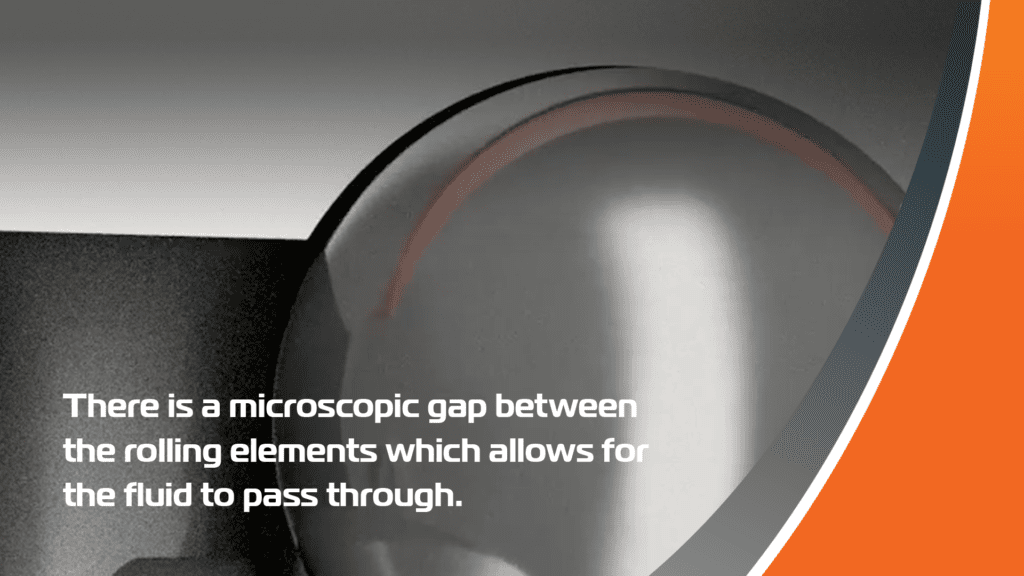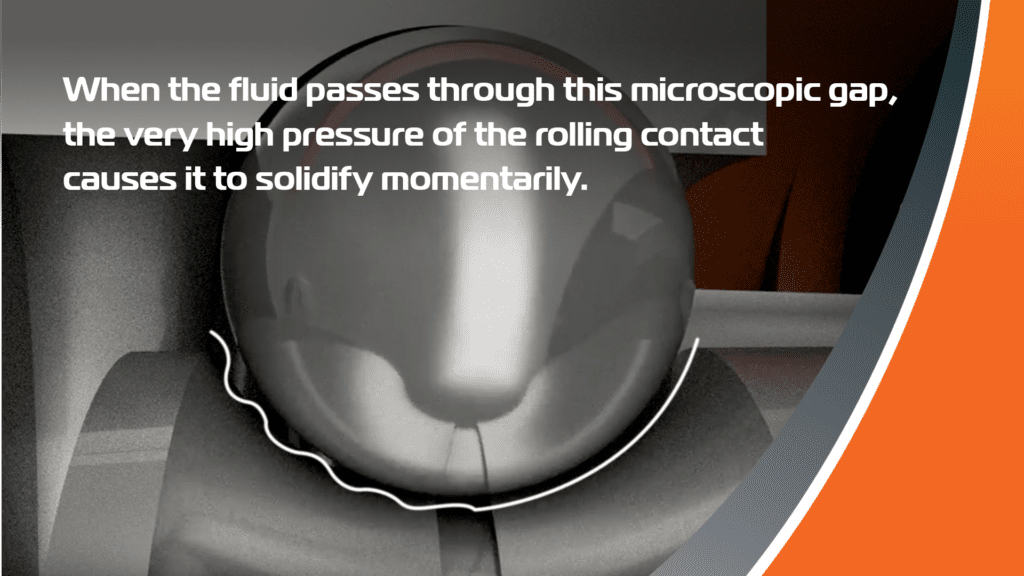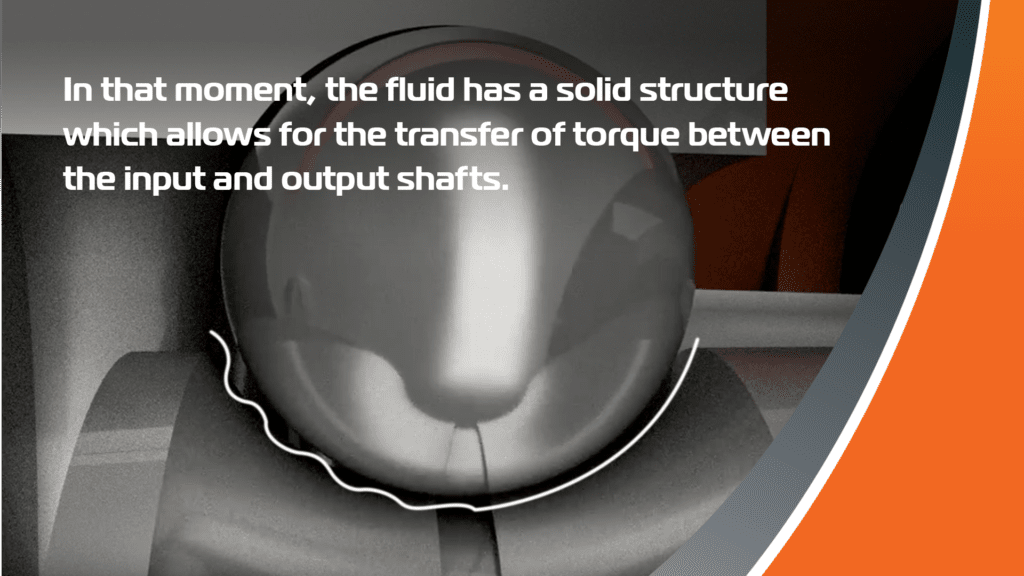Traction drives have been used for power transmission for more than a century. Now today’s advanced manufacturing and materials have made an innovative new traction drive possible.

How traction in general works — and how the new traction drive works
Much like the wheels of train cars, traction drives use normal force to generate usable rotational torque through traction fluids. When pressurized between working subcomponents, these multi-viscosity fluids temporarily become solid to transfer torque, distribute the pressure of the contact area, and prevent metal-to-metal contact. Here’s a video with more details:

In short, one new traction drive from Rolling Motion Industries called the RMI Marmalade includes six moving parts — a cup shaft component, a toroidal shaft component, twin precision-matched bearings for shaft support, one pair of rolling elements between the shaft elements, and engineered traction fluid to help the balls transmit torque. Where oil serves as the traction fluid, rotary seals keep the lubricant contained in the drive housing. Otherwise, the traction drive employs grease.
The engineered traction fluid inside the sealed housing works for power transmission and cools and lubricates the drive. A microscopic gap between the rolling elements lets the fluid slip through — but as the fluid squeezes through this microscopic gap, high pressure causes the fluid to temporarily solidify. Then the solid structure of the fluid transmits torque from input to output shaft.
In fact, material science has enabled this new traction drive mode of operation. Traditional traction-drive fluids have friction coefficients of 0.05 to 0.06. The new drive employs fluid with coefficients of friction of 0.1 to 0.12 — particularly useful for the transfer of torque through smaller normal forces … even with operation that makes slippage between input and output shafts impossible.

Comparing the traction drive to other traction drives
Traction drives are indispensable in super and turbochargers, electric vehicles, pumps, HVAC systems, and medical designs. Traditional traction drives in these designs pin their internal rolling elements, and that necessitates exceptionally tight manufacturing tolerances … plus degrades performance with spin and slip in the assembly’s contact regions. This in turn generates heat and wear even while shortening the life of the traction fluids with sheering.
What’s more, some traditional traction-drive variations have fixed loading — so there’s risk of the drive slipping when torque exceeds that of the usable torque allowed by the fixed amount of normal force. Otherwise, traditional traction drives require a dedicated mechanism for applying normal force to rolling elements. Simple versions use spring loading; more sophisticated versions use hydraulic clamping.

All such variations are suboptimal. Traction drives that simply apply fixed normal force essentially expose their rolling elements to constant high Hertzian contact stresses that needlessly shortens life. On the other hand, adding a separate mechanism for the application of normal force makes the traction drive costlier and more complicated.

RMI Marmalade traction drives require no additional mechanism to apply normal force for proper transmission of torque. Instead, the assembly ensures generation of normal force that’s continuously proportional to needed torque. These traction drives also avoid pinning the balls in their toroidal chamber — and instead let the balls roll along a path of least resistance.
Because the new traction drives are more efficient and quieter than traditional variations, design engineers could soon see and apply these them in an increasingly diverse array of PT and motion applications — particularly in telescopes, conveyors, pick and place systems, and 3D printers, to give a few examples.
Replacing belt drives and gearboxes with traction drives
Gear systems exhibit inefficiencies of varying degrees from relative motion and sliding (as well as churning of lubricant) between mating gear teeth. Because toothed belts essentially function as a gearset (with one of the mating elements a rubber type material) many of the same modes of lost motion from sliding are present. In fact, the efficiency of all belts (whether toothed or standard V-belts) is compromised by sliding and bending action around pulleys.
In contrast, RMI Marmalade traction drives have mating subcomponent geometry that only allows rolling motion between the drive balls and input and output. That’s why they exhibit low vibration … and why their efficiency exceeds that of belt and gear drives … and why they’re a suitable replacement of traditional gearboxes and belt-driven assemblies for some applications. For the latter, the traction drives can deliver a kWh savings to 30% in industrial applications such as industrial fans that typically rely on belt-driven systems. More specifically, the RMI Marmalade traction drive efficiency reaches 98% in some cases — with operating noise levels of only 40 to 50 dB — even at operating speeds to 10,000 rpm.

According the manufacturer, the drives can also last two to three times longer than traditional gearboxes and can work as direct replacements for most standard gearboxes. Converting mechanical designs to incorporate traction drives is simple. In fact, MAR-17 and MAR-23 series RMI Marmalade traction drives are direct replacements for most standard gearboxes. These traction drives require no maintenance.
Specific traction-drive options in production
Fixed-ratio RMI Marmalade traction drives from Rolling Motion Industries abound. Single-stage units come in 2:1 to 5:1 ratios and combine in series to deliver much higher ratios. Upon power input, the drive slows rpm and increases the torque equivalent to the specified ratio. The RMI Marmalade also comes in one-way versions (complete with overriding clutch) and two-way drives with low backlash.

Production versions of RMI Marmalade traction drives were finalized, tested, and approved in 2017, and Fluid Control Solutions (FCS) in Plainville, Conn. is executing high-volume manufacturing of the drives — with machining and production assembly lines already operational. For more information, email info@rmidrive.com or visit rmidrive.com.










Leave a Reply
You must be logged in to post a comment.